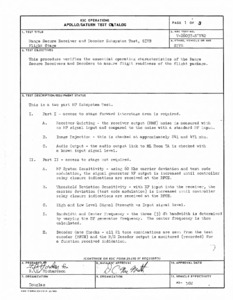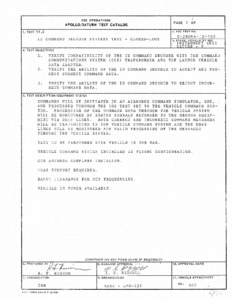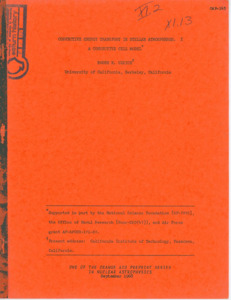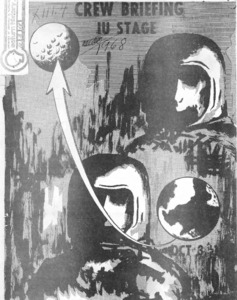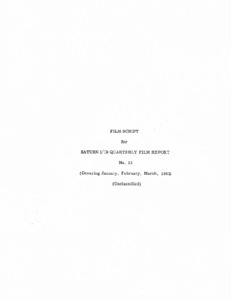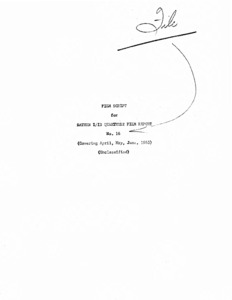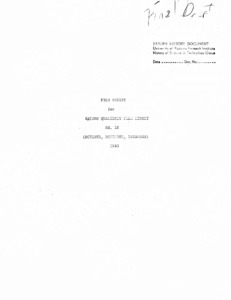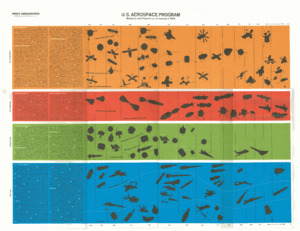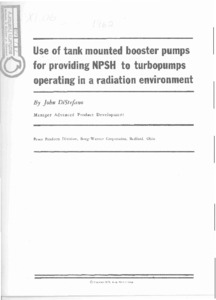
Browse Items (970 total)
Sort by:
-
Catalog of launch vehicle tests Saturn V : Apollo/Saturn 502 : Volume 1, Section 18.
The document is Volume 1, Section 18 of a list of Saturn V launch tests including but not limited to test titles, test numbers, test objectives, and test descriptions related to AS-502. -
Catalog of launch vehicle tests Saturn V : Apollo/Saturn 502 : Volume 1, Section 19.
The document is Volume 1, Section 19 of a list of Saturn V launch tests including but not limited to test titles, test numbers, test objectives, and test descriptions related to AS-502. -
Catalog of launch vehicle tests Saturn V : Apollo/Saturn 502 : Volume 1, Section 20.
The document is Volume 1, Section 20 of a list of Saturn V launch tests including but not limited to test titles, test numbers, test objectives, and test descriptions related to AS-502. -
Convective Energy Transport in Stellar Atmospheres: A Convective Cell Model.
One of the Orange Aid Preprint Series in Nuclear Astrophysics, September 1968.; Supported in part by the National Science Foundation [GP-7976], the Office of Naval Research [Nonr-220(47)]. ; ABSTRACT: The motion in a convectively unstable region is expanded into an ensemble of convective cells. Each of these cells interacts with the surrounding medium according to the semiempirical model proposed by Turner (1963 ). Possible detailed models of the flow patterns within each cell are presented. The radius and velocity of these cells are given as functions of distance moved. The convective flux and rms velocity are given as averages over the ensemble of cells. As in the standard mixing length theory the principle uncertainty remains the average initial radius of the cells. -
"Crew Briefing : Instrument Unit Stage Presentation".
Document outlining different slides of a presentation containing numerous organizational charts, diagrams and bullet-list points. -
"Film script for Saturn I/IB quarterly film report no. 15."
Unclassified film script of the Saturn I/IB Quarterly Film Report covering January, February, March, 1963. There are handwritten notes and edits throughout the document. -
"Film script for Saturn I/IB quarterly film report no. 16."
Unclassified film script of the Saturn I/IB Quarterly Film Report covering April, May, June, 1963. There are handwritten notes and edits throughout the document. -
"Film script for Saturn quarterly film report no. 18."
Unclassified film script of the Saturn I/IB Quarterly Film Report covering October, November, December, 1963. A handwritten note at the top of the title page lables this copy as the "Final Draft". -
"U.S. Aerospace Program: missions and projects as of January 1, 1966."
The document contains four charts labeled "Investigation", "Exploration", "Utilization", and "Control". Each chart is organized chronologically, contains drawings of U.S. Aerospace Program Projects, and incudes written descriptions of each project. -
"Use of tank mounted booster pumps for providing NPSH to turbopumps operating in a radiation environment."
This paper outlines the results of a test program which was planned to demonstrate the feasibility of using a tank mounted, all-inducer, high speed liquid hydrogen booster pump to provide NPSH for the turbo pump in a reactor-powered vehicle. The cavitation problem associated with pumpoing liquid hydrogen, when used as a propellant, is further aggravated by localized heating caused by radiation from the reactor.
